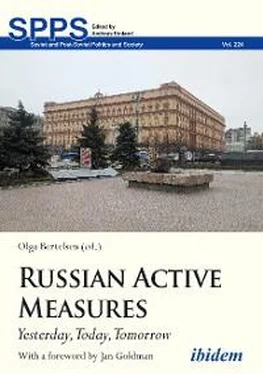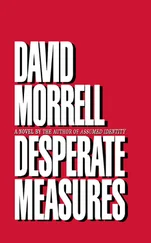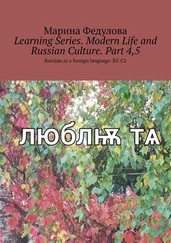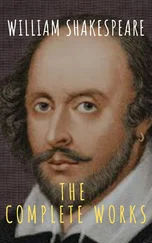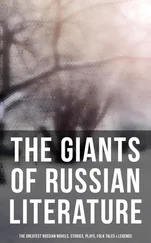1 ...7 8 9 11 12 13 ...24
Soviet Propaganda and Disinformation
Let us, however, make a foray into history. Propaganda is not something new. The Soviet Union advanced itself in producing propaganda. In the early 1920s, the Bolsheviks established a special unit within the Central Committee of the Communist Party, called the Agitation and Propaganda Department, well known in its abbreviated form—Agitprop. The Agitprop had sub-departments responsible for the press, cinema, theater, radio, the arts, literature, science, and schools. It was so successful that it served as a model for Joseph Goebbels, the Nazi Minister of Popular Enlightenment and Propaganda.
The word “disinformation” ( dezinformatsiia ) is also of Russian origin. For the first time, the word appeared in 1963, when the KGB created a special section, tasked with spreading disinformation. 6The rich experience of the Soviet secret police, including its tactics and strategies, eased the tasks of Vladimir Putin who employed and emulated the Soviet models. However, Putin has not simply copied the existing intelligence templates but rather improved them, being a true reformer and even an innovator. He allocates extremely generous budgets to the Kremlin’s propaganda efforts, profoundly modernizing the Russian propaganda machine. He uses psychological know-how, systematically adjusting the ways in which he conducts information warfare. He intelligently uses the openness of the Western media, making it vulnerable to the Russian propaganda offensive. Importantly, he has transformed propaganda into an effective war machine, destabilizing Western countries and actively interfering in elections. These tactics allow Putin to effectively influence political, social, economic, and cultural processes, undermining developed world democracies.
How Does the Russian Propaganda Machine Work?
The main instrument used in the Kremlin’s propaganda offensive is the Russian cable TV RT (originally named Russia Today ). Launched in May 2005, it was designed to become a global competitor of CNN, BBC World, Deutsche Welle, and Al Jazeera. The channel went live on 10 December 2005. The Kremlin was prepared to invest substantial sums in this project. Starting with $70 million in 2005, the budget was increased to $80 million in 2007 and to $120 million in 2008. In 2011, the budget was tripled to $380 million. RT grew into an organization with a staff of two thousand employees worldwide, reporting from twenty bureaus. It included a bureau in Washington with approximately one hundred personnel. The new Russian cable TV was very successful. In 2013, two million Britons watched RT regularly. It did not confine itself to broadcasting in English, but also offered programs in Arabic and Spanish. After the annexation of the Crimea in 2014 and the invasion of eastern Ukraine, the Kremlin decided to focus on the two leading countries of the EU, France and Germany, launching a French-language and German-language channel. Confronted with Western sanctions, RT’s budget, which was still approximately $330 million in 2015, was reduced by ten percent for the year 2016, when it received approximately $300 million. 7According to the Russian American Magazine ,
… today RT is a global, round-the-clock news network that includes seven TV channels broadcasting news, current affairs and documentary content, digital platforms in six languages and a video news agency RUPTLY. Round-the-clock news channels in English, Arabic and Spanish and documentary channel RTDoc in English and Russian broadcast from Moscow, while RT America airs from a Washington, DC studio and RT UK—from London. Today, RT is available in more than 100 countries spanning 5 continents. 8
What is the content of RT’s programs? In the first years RT aimed at improving Russia’s image abroad. The programs featured Russia’s unique culture, its ethnic diversity, and its decisive role in the Second World War. Their viewers would seek in vain for reliable information on more critical subjects, such as election fraud, frequent murders of journalists and politicians, and government officials’ corruption. In the summer of 2008, during Russia’s invasion of Georgia, RT became a source of active disinformation, depicting the Georgians as the ones who committed genocide against Abkhazians and residents of South Ossetia. This narrative was embraced by other Russian news outlets and scholars at prestigious Russian universities (i.e., MGIMO), and it persists today among Russian journalists and the Russian political elite. 9From the moment RT’s focus began to change. Defensive “soft power” tools were replaced with an offensive tool of disinformation that helped RT accentuate the negative sides of the West in general, and the United States in particular. Routinely, an emphasis was made on the growing social inequality, race problems, homeless people’s suffering, mass unemployment, human rights violations, and the consequences of the banking crisis. Anchors of RT programs, such as Peter Lavelle, did not hide their explicit anti-American views. 10
RT began to invite “experts,” many of whom represented marginal or extreme right groups. One of these groups was the “truthers,” people who believed that the 9/11 attacks were not the work of al-Qaeda, but of the U.S. government. 11Another group was the “birthers” who, without offering any evidence, doubted Barack Obama was born in the United States, and questioned his eligibility to serve as American president. Manuel Ochsenreiter, an “expert” from Germany and the editor of the neo-Nazi magazine Zuerst! has been regularly invited as a speaker by RT’s English-language channel. The Economist did not hesitate to qualify RT’s programs as “weirdly constructed propaganda” characterized by “a penchant for wild conspiracy theories.” 12Despite this sort of criticism, and Western nations’ constraints and regulations which prescribe the rules of impartiality, RT acquired free access to Western audiences and became an effective propaganda tool of the Kremlin. RT’s success inspired the Kremlin to also revamp The Voice of Russia, an international radio station. On 9 December 2013, Putin issued a presidential decree, merging The Voice of Russia with the news agency RIA Novosti and forming a new international news agency Rossiia Segodnia (Russia Today). The radio station was transformed into Radio Sputnik , becoming part of a broader platform, Sputnik News, which also had an online presence. The new international radio station began to broadcast on 10 November 2014.
“Russia Beyond the Headlines”: Targeting Western Elites
The objectives of RT and Sputnik included targeting broad international audiences, yet the Kremlin never gave up the idea to also reach out to the Western elites. This was the reason to launch another project in 2007— Russia Beyond the Headlines (RBTH) . The initiator of this project was the Rossiiskaia Gazeta (The Russian Newspaper), the official Kremlin paper in which state laws and decrees are published and official views are reflected. This project was extremely ambitious, and once a month a Russian eight-page supplement was added to a number of highly influential Western papers, including The Washington Post (United States), 13 The New York Times (United States) , The Daily Telegraph (United Kingdom) , Le Figaro (France) , Repubblica (Italy) , El País (Spain) , De Standaard (Belgium) , and the Süddeutsche Zeitung (Germany) . The titles of this supplement were: Russia Now in the United States and the U.K.; La Russie d’Aujourd’hui in France; Russland Heute in Germany; Russia Oggi in Italy; and Rusia Hoy in Spain. Each of these printed supplements had their own website that could be reached via links offered by these newspapers at their official websites. The Russians succeeded in making the supplement look like a Western newspaper, with an attractive layout and interesting texts that covered sport events, cultural issues, cuisine, art, and faits divers.
Читать дальше
